According to Leatherhead Food Research, 51 per cent of homes in the UK now have an air fryer and 62 per cent of the people who’ve got an air fryer use it at least once a week.
While it’s useful for cooking all sorts of foods there are some things you shouldn’t trust it to do and there are some warnings that it might be too helpful to be trusted.
Which? warned that certain brands of air fryers might be spying on you, as some of them had tried to record audio from people’s phones for no specified reason.
Now, however, new research has indicated that there’s something about the air fryer which might really help your health and it’s not about the kinds of food you can cook in it.
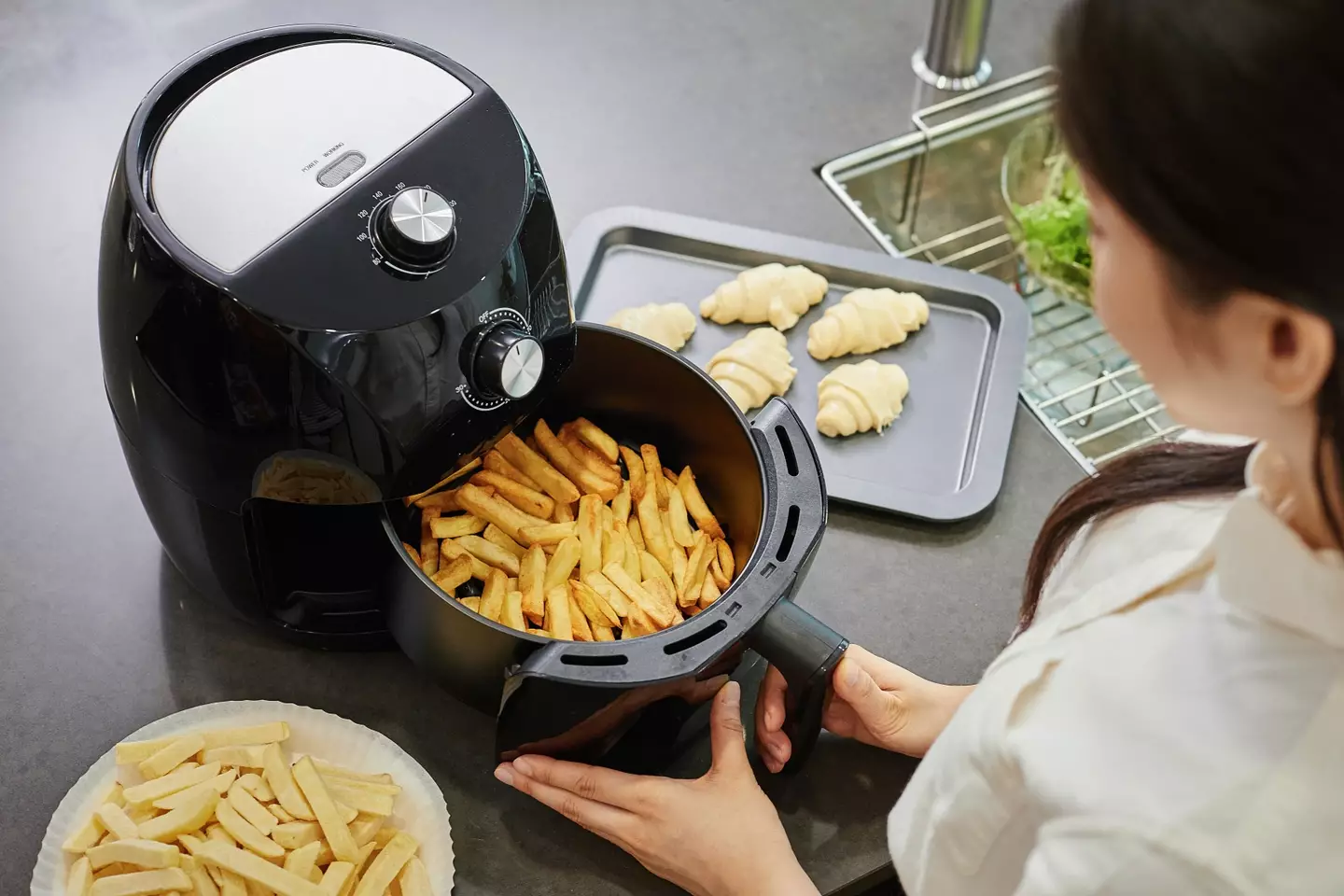
Did you know that cooking causes indoor pollution, and that the air fryer causes least? (Getty Stock Photo)
Researchers from the University of Birmingham found that when it comes to indoor pollution, the air fryer is the least hazardous of all when it comes to affecting your health.
They found that most people spend as much as 80 percent of their time indoors and so the pollution that goes on indoors is incredibly significant to the health of the people around it.
Cooking food is one of the main sources of indoor pollution and so the team decided to compare the pollutants produced from cooking a chicken breast with five popular methods, pan frying, deep fat frying, air frying, stir frying and boiling.
For each cook, they measured the particulate matter and volatile organic compounds that the various methods released into the air.
When it came to particulates, there was by far the worst offender, as pan frying released 92.9 micrograms per cubic metre of air, while stir-frying dropped that figure down to 26.7, deep frying brought it down to 7.7, boiling was just 0.7 but the air fryer beat them all with a score of 0.6.
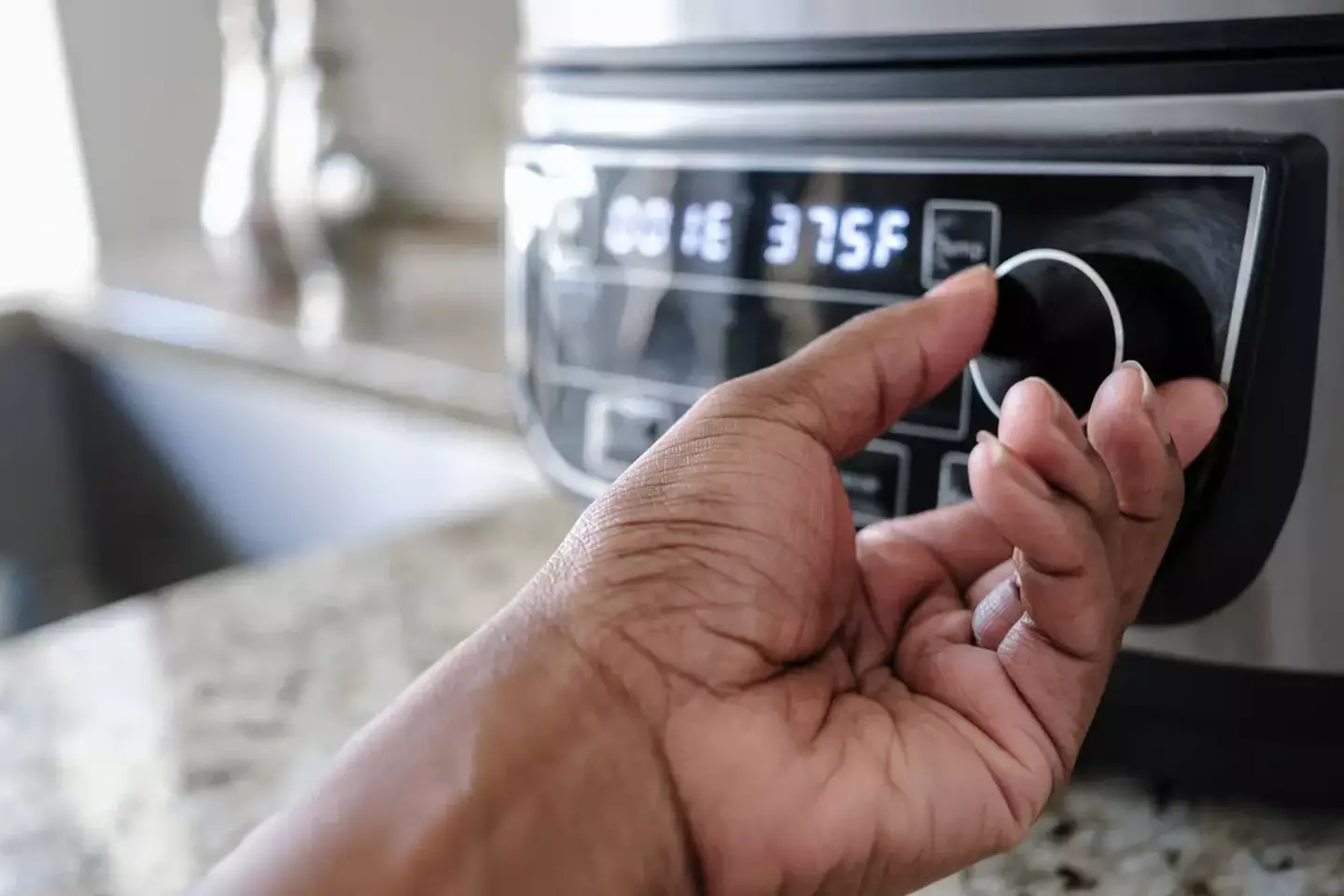
Pan frying is the biggest polluter, air fryers the least and therefore best for your health. (Getty Stock Photo)
To measure volatile organic compounds, they did it in parts per billion (ppb), with pan frying once again being the biggest polluter with 260 parts per billion, followed by deep frying at 230ppb, stir frying at 110ppb, boiling at 30ppb – and the air fryer once again winning at 20ppb.
The study indicates that pan frying is the most polluting way of cooking something in the kitchen while the air fryer is going to be a significantly less polluting presence for a space you’re very likely to be living in.
While the researchers only took about 10 minutes to cook the chicken each time the pollutants remained in the air for well over an hour afterwards.
Professor Christian Pfrang of the University of Birmingham, the study’s lead author, said that besides the cooking method, there were a number of other factors which would affect indoor pollution from cooking, including the ‘amount of oil used’ as well as ‘the temperature of the stove’.
He added: “It’s also really important to understand that particles will remain in the air for quite some time after you have finished cooking, so continuing to ventilate, or keeping extractor fans turned on for a period of time will really help to avoid the build-up of this indoor pollution and reduce the potential for the pollutants to be transported and distributed throughout the house with the associated higher personal exposures.”
Featured Image Credit: Getty Stock Images
Topics: Health, Food And Drink, Science
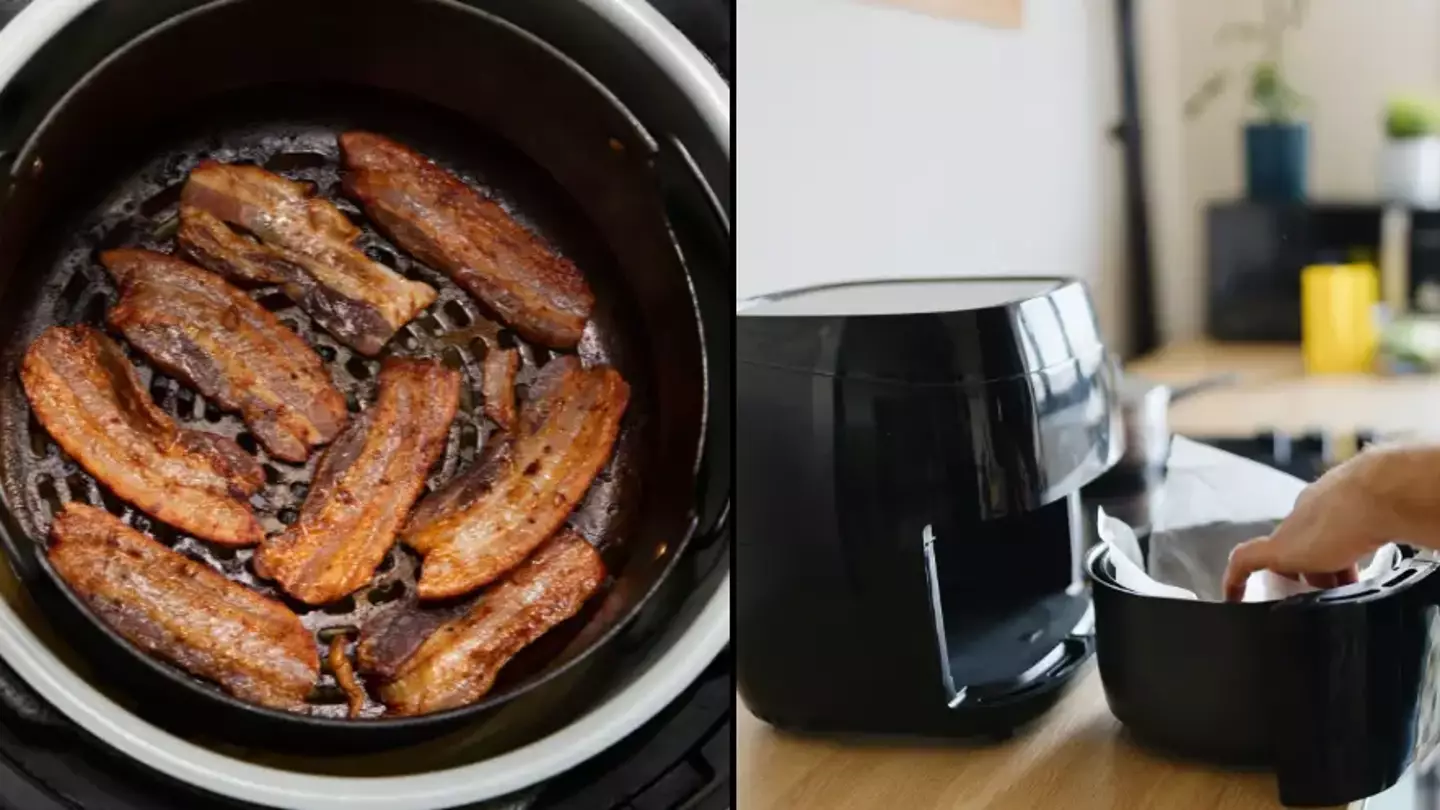
By now, if you haven’t already got one, you’ve probably sat through endless lectures from friends about why you absolutely need an air fryer.
Every day, there’s that colleague in the office bragging about the dinner they so easily whipped up in theirs the night before.
And to be fair, you can cook a flipping lot of things in the handy bits of kitchen tech.
But there are some dishes that you probably shouldn’t be using them for, and a food expert has issued a warning to people who cook bacon in an air fryer.
Sure, using them to rustle up a tasty full English seems like a great idea, but Brenda Peralta explained this can cause chaos in the kitchen.
.jpg)
It does look good though, doesn’t it? (Getty Stock)
She told HuffPost: “It is a fatty food, and when it is cooked in an air fryer, the fat can drip down and cause smoke or splatter.
“This can make the bacon difficult to cook evenly, and it can also produce a lot of smoke and odours.”
The recipe developer said this means you run the risk of some rashers being uncooked, which could of course cause food poisoning.
As well as this, the air fryer itself ends up becoming quite a hazard due to the build-up of bacon grease, leading to it suddenly begin to smoke.
The bacon fat splatters out across the air fryer’s heating element, causing the gadget to start smoking before a smell of burnt food fills the air. What a lovely start to the day.
Aside from the impromptu pyrotechnic display, bacon can also be difficult to deal with if you want your plate arrangement to look pretty, according to Brenda.
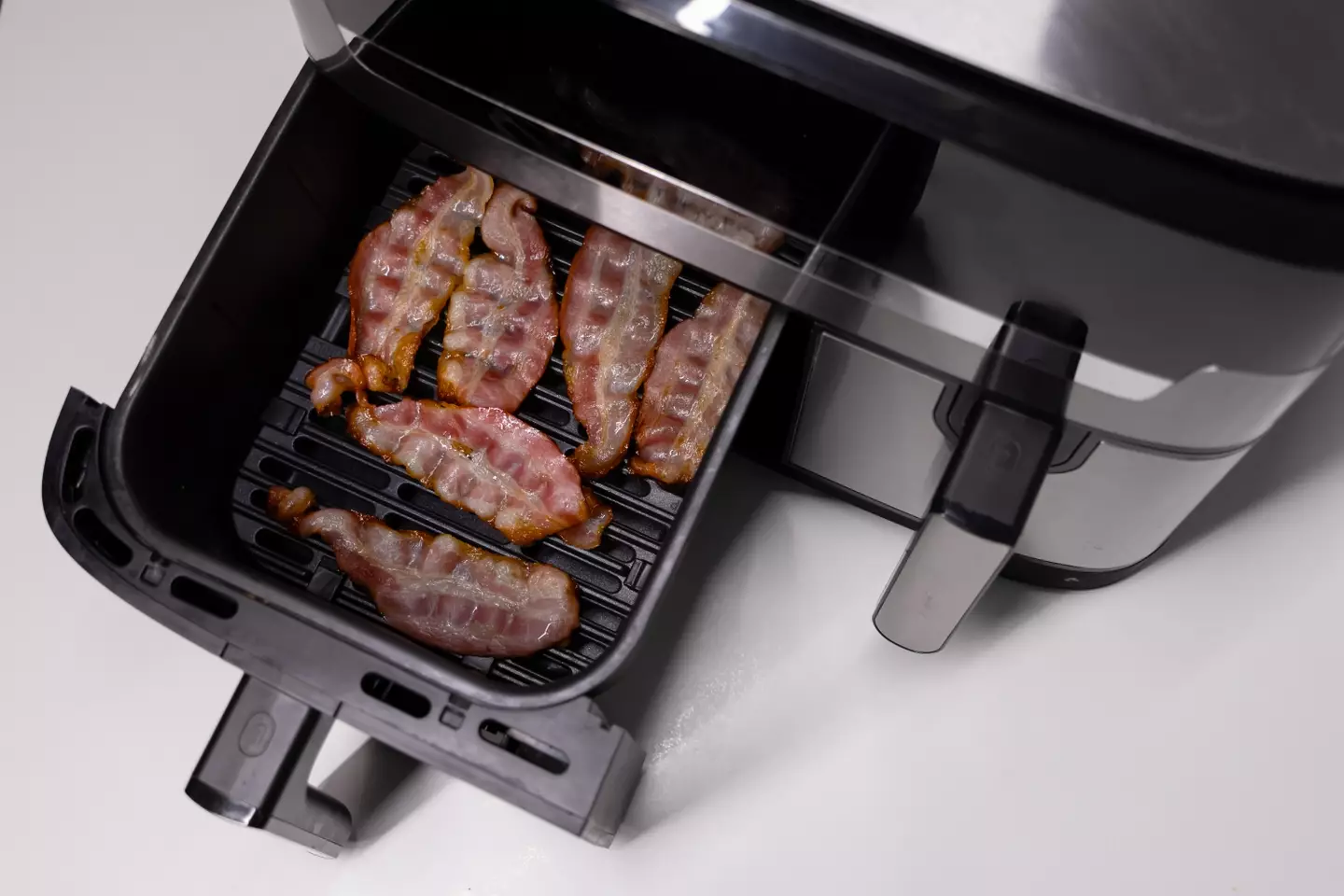
Be careful with the bacon lads. (Getty Stock)
She continued: “A bacon strip is a small and delicate food, and it can be difficult to flip or remove from the air fryer basket without breaking it.”
And although it’s small, that doesn’t mean you should be trying to fit loads in.
“The air fryer basket may not be large enough to accommodate a large quantity of bacon,” the dietitian added.
“This can make it difficult to cook a lot of bacon at once, which can be inconvenient if you are cooking for a group.”
And of course, piling it on top of each other will inevitably leave some portions uncooked.
Maybe the magical mini ovens can’t cook air-vrything after all.
Featured Image Credit: Getty Stock Images
Topics: Food And Drink, Health, Technology
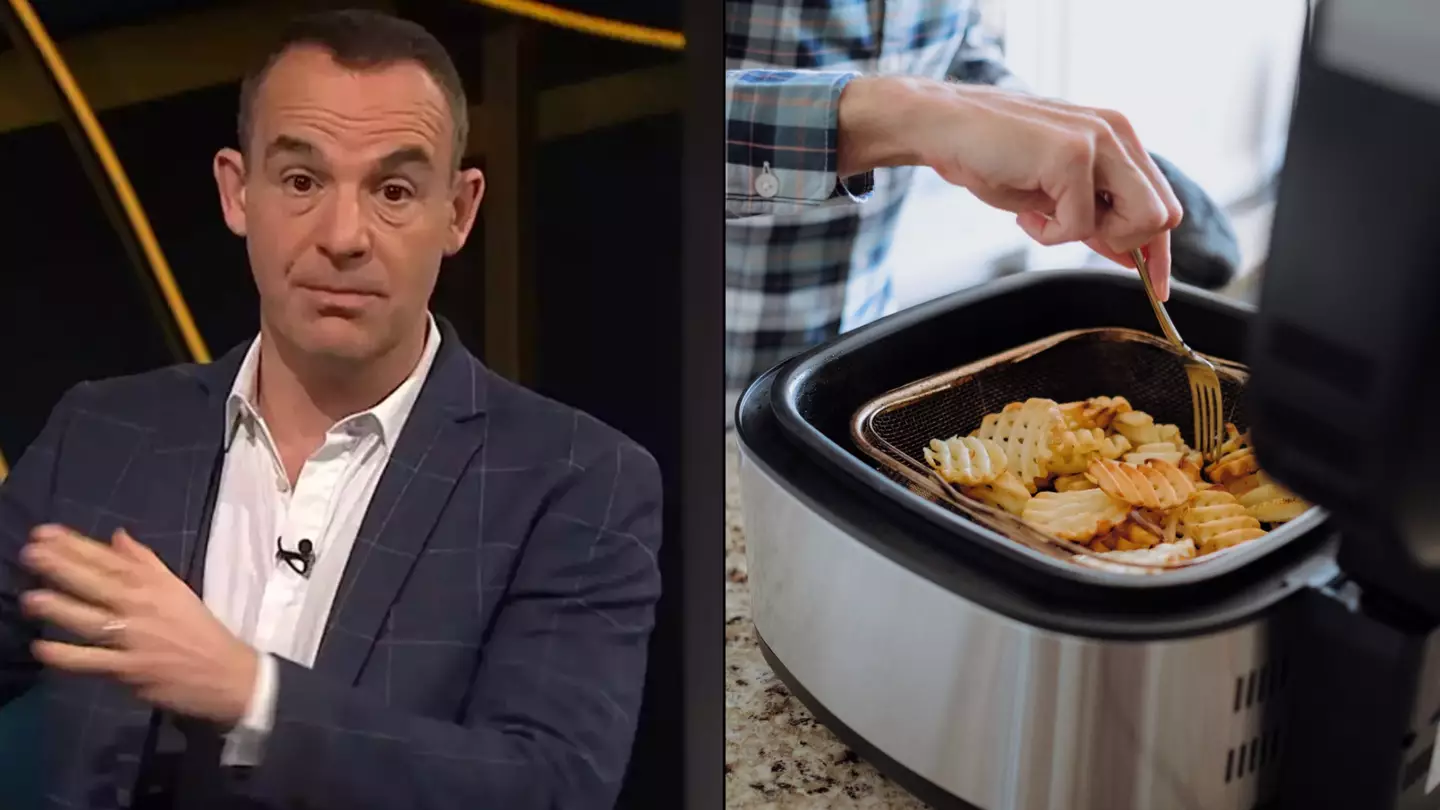
Yeah, sure, your air fryer is a game-changer. We’re all fed up of hearing it now.
Unless you’re willing to admit you’re the culprit, you’ve got at least one mate who won’t stop banging on about how good their air fryer is.
And to be fair, they are pretty handy. The kitchen appliances save a whole lot of time when you fancy a nice hot snack and people will cook anything and everything in them.
You might be interested to know that Martin Lewis gave his words of wisdom on the cookers every Brit seems to love so much. But it might not be the good news you’re hoping for.
In a previous episode of The Martin Lewis podcast, the 51-year-old explained how air fryers don’t always outweigh ovens in being cheaper to use.
Lewis says: “A microwave gives you consistent heat whereas an oven is warming up to full temperature and then topping it up so it isn’t running at full power the whole time.
“If you were doing a full roast dinner and you were cooking many [jacket potatoes], it’s probably cheaper [putting them in the oven] than putting five or six jacket potatoes in a microwave because each additional object you put in a microwave, you need to keep it on longer because a microwave just heats the individual object.”
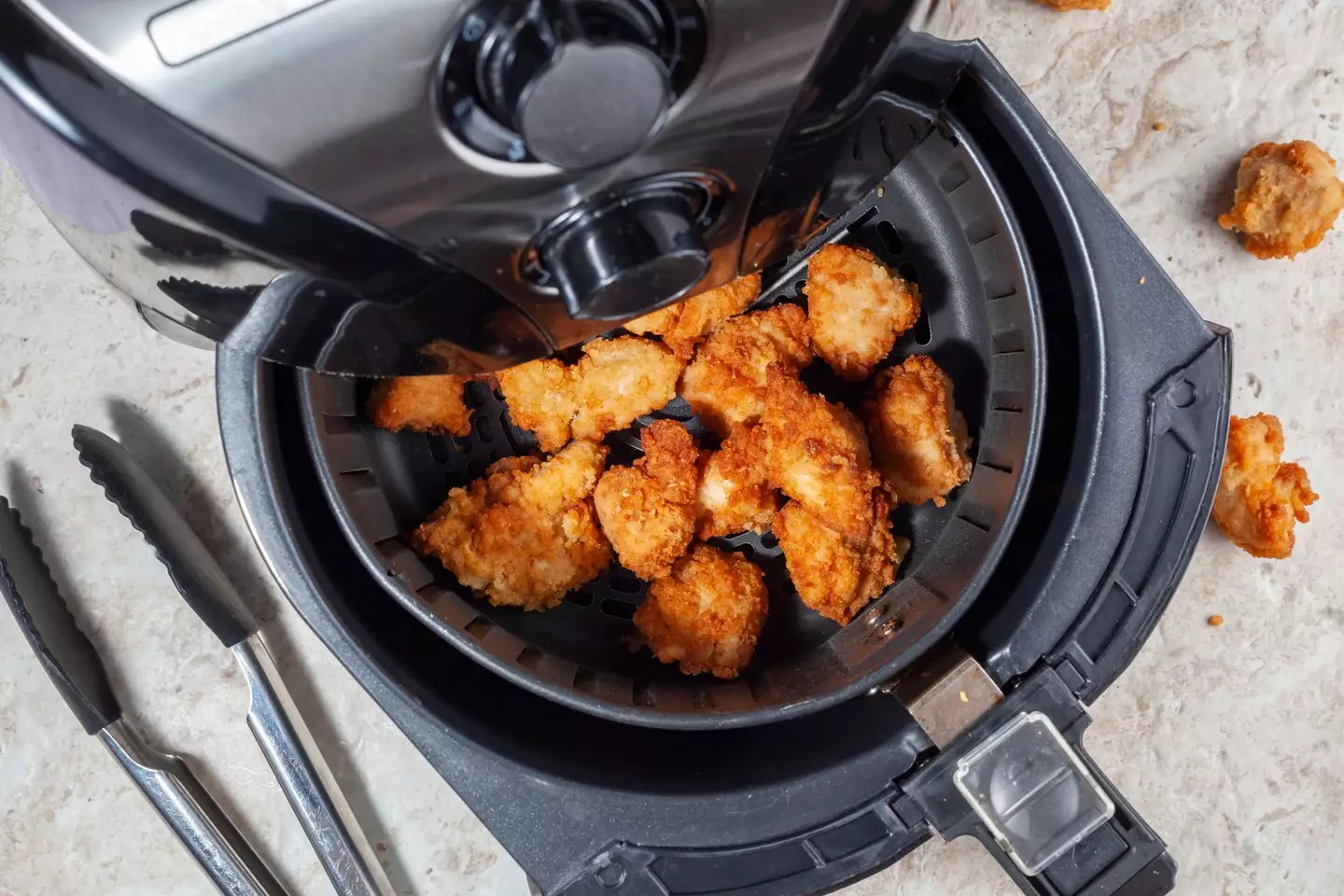
Air fryers aren’t always more cost-efficient than an oven. (Getty Stock Photo)
Don’t start debating throwing out your air fryer just yet though, as Lewis notes if you cook a single jacket potato, which only needs around 10 minutes, it will be ‘far cheaper’ to do in a device like a microwave.
This goes for your beloved air fryer as well, as heating a jacket potato in your oven will take around ‘an hour and a half’ and is therefore more expensive.
But if you fancy getting really technical, you can work out whether it’s best to use your oven or air fryer for each meal using a handy equation.

Martin Lewis. (ITV)
He says: “General equation is, find the wattage of an item, then work out how many kilowatts or what fraction of a kilowatt it’s using, then multiply that by 34p per hour of use.
“[…] The problem with the equation for heating equipment is an oven is going to be about 2,000W. If you had a 1,000W microwave and you put it on for 10 minutes, one KWH for a sixth of an hour, a sixth of 34p is about 6p, shall we say?
“So it’s 6p turning the microwave on for that amount of time. So yes, it’s a very useful equation.”
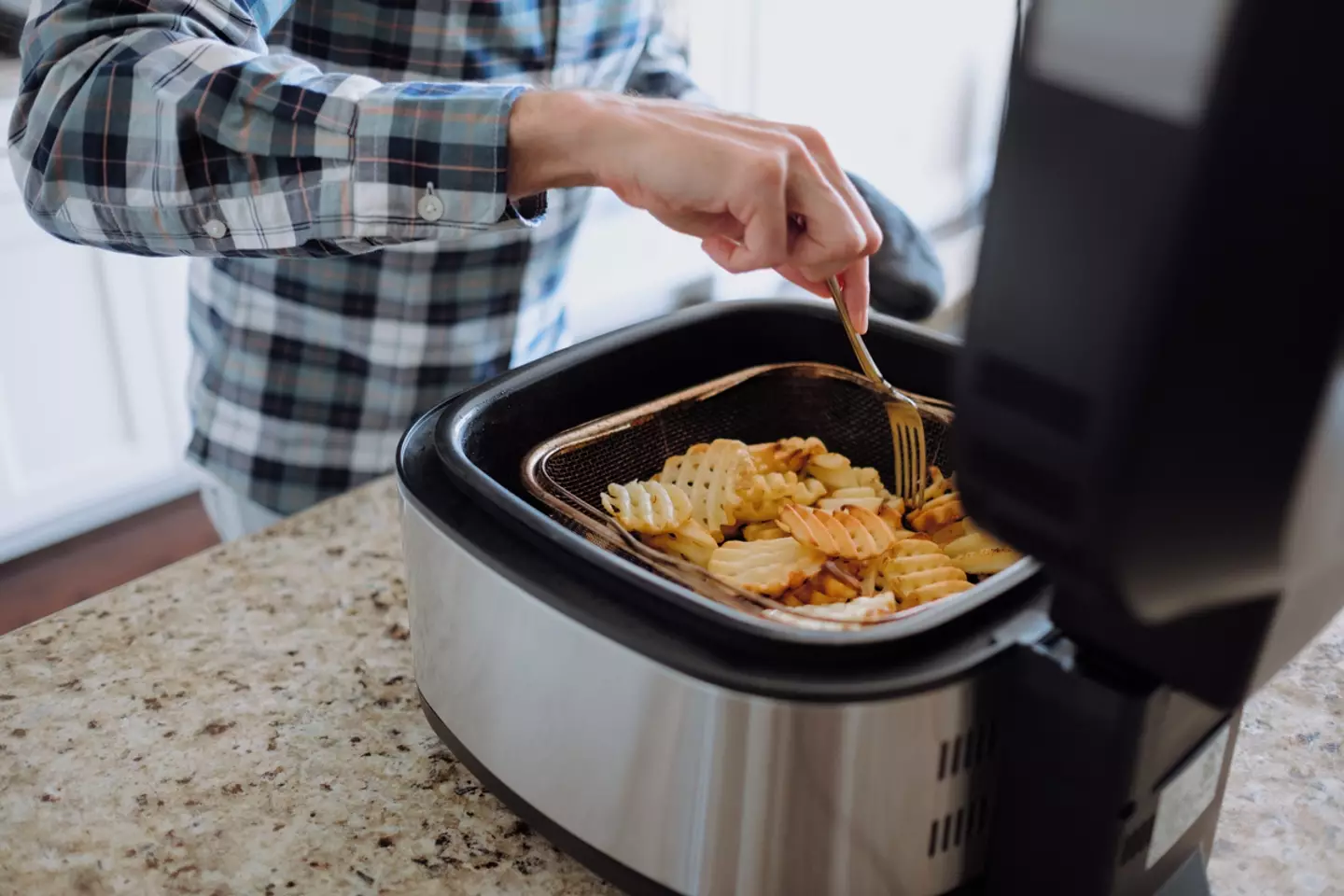
Air fryer life. (Getty Stock Image)
The same equation can be used for air fryers too. The Money Edit echoes Lewis’ advice, noting ‘generally’ air fryers are ‘cheaper to use’ than an oven.
It explains: “An oven costs 21p to use on average and a 800W air fryer costs 13.6p to use.
“But if you own an air fryer that is a lot more powerful, you could be using near enough the same energy as an oven. For example the 2,000W air fryer costs 34p per use, that’s 13p more than an oven.
“And the biggest factor is the quantity of food you’re cooking. […] Cooking the same thing twice in an 800W air fryer could cost you more than 26p, which is more expensive than cooking in the oven.”
Lewis resolves: “If you’re cooking something small and simple in there, it’s probably cheaper in the microwave and similarly the air fryer.”
Featured Image Credit: ITV/Getty Stock Image
Topics: Cost of Living, Martin Lewis, Food And Drink

Martin Lewis is back to impart his wisdom and advise us on our use of kitchen appliances, but it’s not great news for air fryer advocates.
The Money Saving Expert has spoken out about the trend, which has taken the world by storm since the lockdown where many bought air fryers to cook and bake some new recipes.
We all had a lot more time back then.
But now, I’m sure that if you do own one, you still use it while cooking as they are said to be quciker, healthier and more cost-efficient than using an oven.
Win-win, really.
However, finance guru Martin Lewis has bestowed some of his knowledge upon us and our worlds might be about to be turned upside down.
Speaking on an episode of The Martin Lewis podcast, he speaks about the difference between a regular oven and the smaller alternative.

ITV
Lewis revealed that an air fryer isn’t always the most cost-efficient way to cook your meals.
“A microwave, I believe, gives you consistent heat whereas an oven is warming up to full temperature and then topping it up so it isn’t running at full power the whole time,” he explained.
The 51-year-old stated: “If you were doing a full roast dinner and you were cooking many of them, that is where it’s probably cheaper than putting five or six jacket potatoes in a microwave because each additional object you put in a microwave, you need to keep it on longer because a microwave just heats the individual object.”
But it’s not all doom and gloom air fryer fans, as the expert also revealed that cooking something such as a jacket potato for 10 minutes in the microwave is cheaper than cooking it in a huge oven for an hour and a half.
For those of you who love a bit of maths and want to work out exactly how to know if using one or the other is cheaper, there is an equation.

Getty Stock Photo
Lewis further explains: “General equation is, find the wattage of an item, then work out how many kilowatts or what fraction of a kilowatt it’s using, then multiply that by 34p per hour of use.”
“The problem with the equation for heating equipment is an oven is going to be about 2,000W,” Lewis explains.
“If you had a 1,000W microwave and you put it on for 10 minutes, one KWH for a sixth of an hour, a sixth of 34p is about 6p, shall we say? So it’s 6p turning the microwave on for that amount of time. So yes it’s a very useful equation.”
‘Which?’ a consumer group, also found that the traditional method of an oven is better to cook large quantities.
But with smaller amounts with appliances like air fryers, they state: “We’ve found these products cost less to cook certain foods than conventional ovens.”
So there you have it, no need to chuck your air fryer away, just stick to using it for small amounts!
Featured Image Credit: ITV / Getty Stock Photo
Topics: Money, UK News, Martin Lewis, Food And Drink, Cost of Living

Convenience tends to be a high priority for many of us after the long commute back home from work.
By the time you get home, often the last thing you want to do is spend an hour or two whipping up a meal. You want something quick and easy that lets you enjoy the night off before you’ve got to do it all again.
However, it seems that a common, budget-friendly choice could be ‘a colossal risk to public health‘.

Most of us have it knocking around in the cupboards (Getty Stock Images)
We’ve been having tinned food for years, but a new study has suggested that it could be doing more harm than good.
150 tins of tuna were purchased across the UK, France, Italy, Spain, and Germany, with tests showing that all of them ‘were contaminated with mercury’.
Exposure to mercury could cause health problems, such as nervous system effects like vision, hearing, and speech disturbances.
More seriously, the metal has been linked with life-threatening lung damage and even some cancers.
The US Environmental Protection Agency said: “In very high doses, some forms of mercury have caused increases in several types of tumours in rats and mice.”
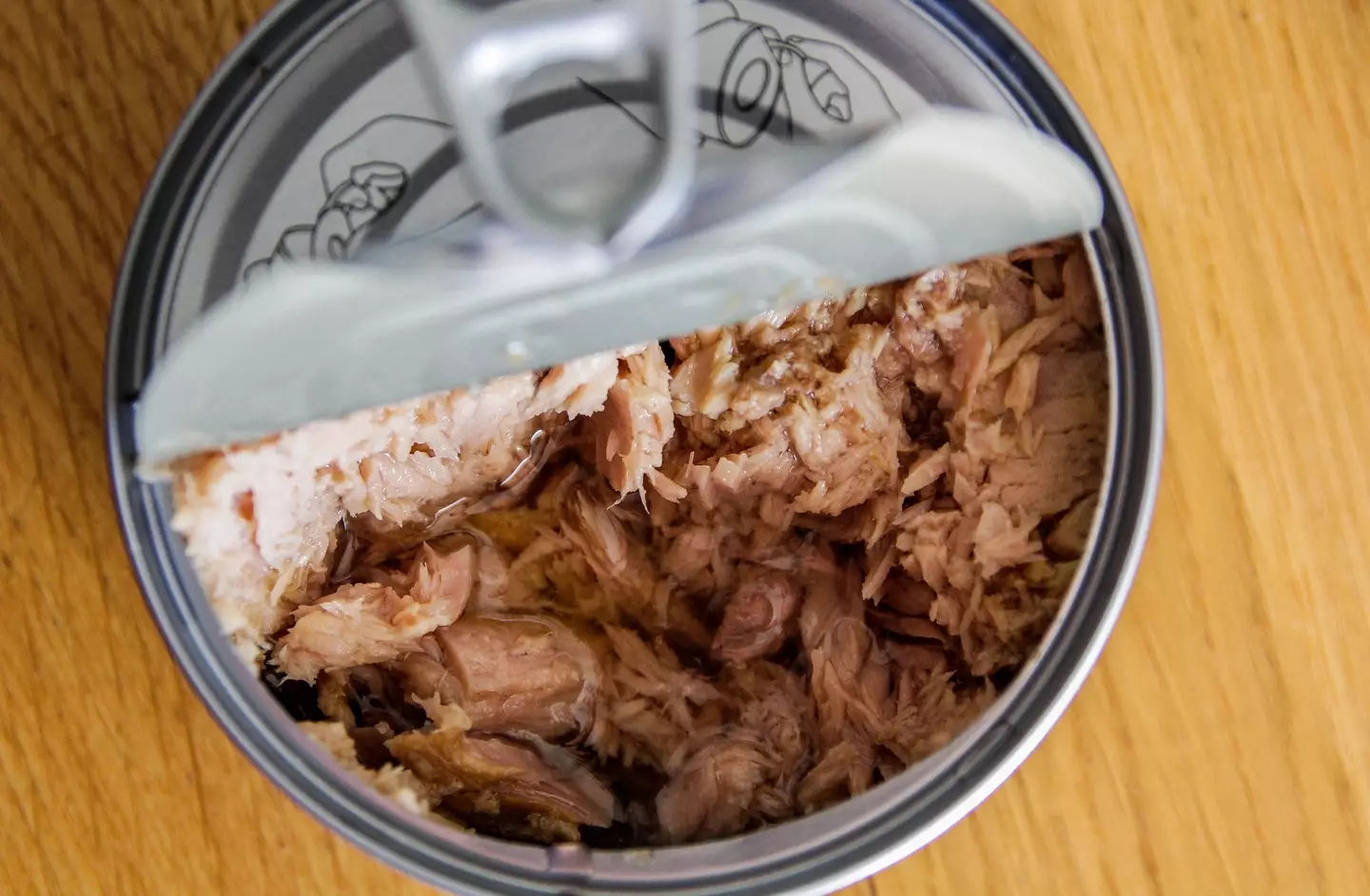
Tinned tuna is packed with protein and convenience, but it might also lead to serious health issues (Getty Stock Images)
Though they note that ‘no human data currently tie mercury exposure to cancer, but the data available are limited’.
Karine Jacquemart, CEO of consumer rights organisation Foodwatch France – one of the two groups behind the study – said: “What we end up with on our dinner plates is a colossal risk to public health that’s not considered seriously.
“We won’t give up until we have a more protective European standard.”
The Bloom group, which campaigns for protection of the oceans, also added: “That is the reason why tuna, among the most contaminated species, is given maximum tolerance in mercury three times higher than less contaminated species.
“Mercury is not less toxic if it’s ingested through tuna, only the concentration of mercury counts.
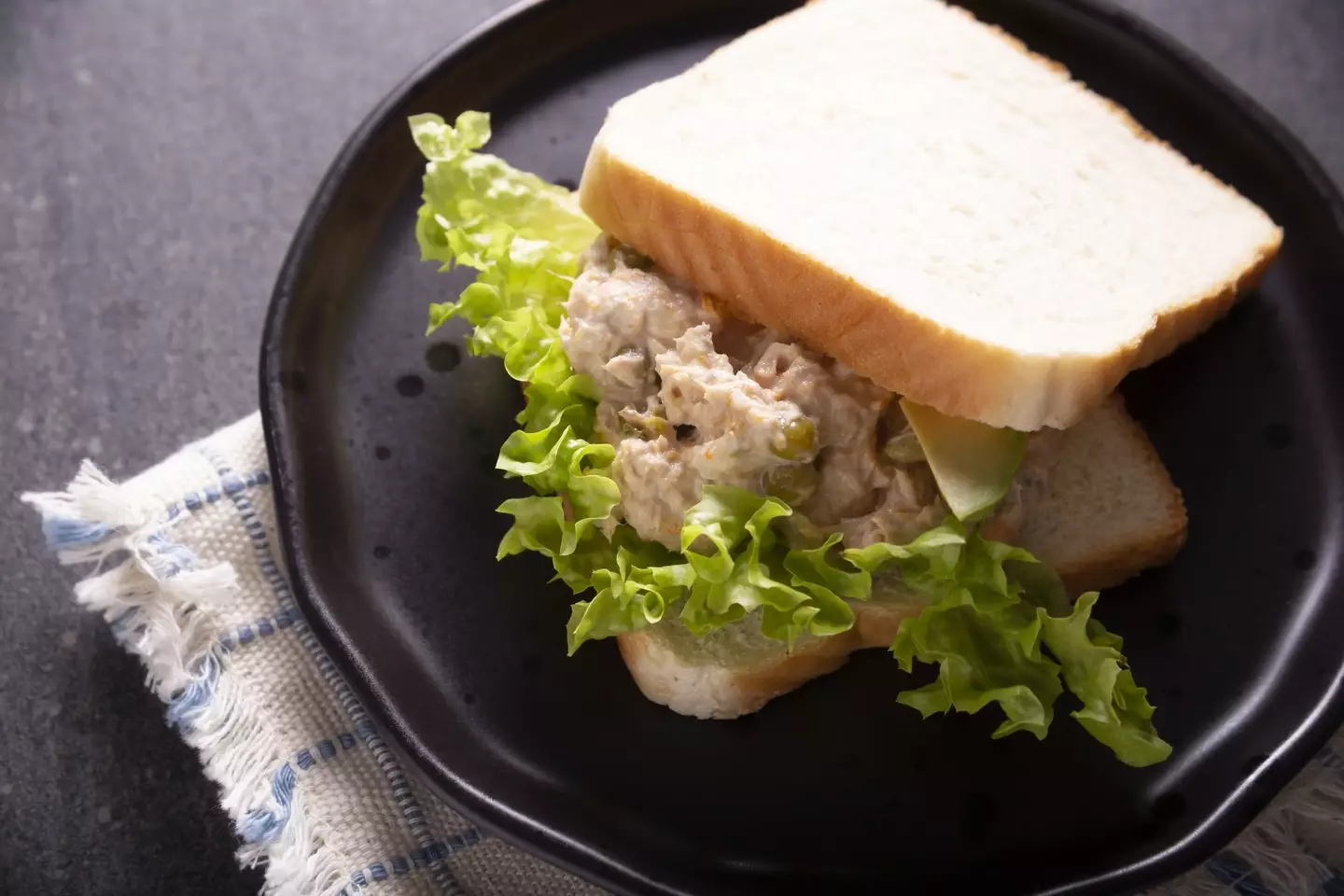
We’ve all seen tuna sandwiches going in the meal deal section (Getty Stock Images)
“We demand that the public authorities strengthen regulation and, without delay, that distributors do not sell products over the most protective level.”
They noted that in more than half of the tins, the mercury level was higher than the 0.3 milligrams per kilogramme maximum limit for mercury in other fish.
Bloom claim that the accepted mercury level of one milligram per kilo is there to make sure that ’95 percent’ of tuna caught is sold.
Mercury exposure can also come from breathing in mercury vapour and skin contact, causing skin itching and redness.
